What the Fed's Rate Pause Means for Savings
At the latest policy-setting meeting, the Fed kept interest rates steady. Here's what that means for savings rates.
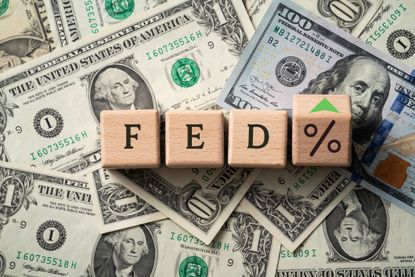

The Federal Reserve decided to hold interest rates steady for the fifth consecutive time at its most recent policy-setting meeting in March. Since March of 2022, the central bank has been increasing interest rates in an attempt to combat high inflation, which peaked at 9.1%. And while this caused savings rates to rapidly increase, they've been dropping since the Fed began to put a pause on rate hikes.
As the Federal Reserve once again holds interest rates steady, the Federal Funds rate remains at a target range of 5.25% to 5.5%, the highest it’s been in 23 years. However, several rate cuts are slated for later this year. The Federal Reserve maintains their earlier projection that there will be three interest rate cuts in 2024 to reduce the federal funds rate to a range of 4.5% to 4.75%.
The official press release states: "In considering any adjustments to the target range for the federal funds rate, the Committee will carefully assess incoming data, the evolving outlook, and the balance of risks. The Committee does not expect it will be appropriate to reduce the target range until it has gained greater confidence that inflation is moving sustainably toward 2 percent."

Sign up for Kiplinger’s Free E-Newsletters
Profit and prosper with the best of expert advice on investing, taxes, retirement, personal finance and more - straight to your e-mail.
Profit and prosper with the best of expert advice - straight to your e-mail.
Here's what the Fed's decision means for savings rates.
What does the Fed’s decision mean for savings rates?
When the Fed raises interest rates, typically rates on savings accounts also go up. Because of this, savings rates rapidly rose when the Fed began hiking interest rates last year. However, since the Federal Reserve decided to hold interest rates steady, savings rates started to fall. And when the Federal Reserve cuts interest rates this year, savings rates will likely drop even further.
As rates continue to go down, consider locking in rates while they're still high. In fact, some of the top earning high-yield savings accounts, money market accounts and CD accounts are still offering rates over 5%. Use the below tool — powered by Bankrate — to compare rates on high-yield savings accounts, as well as CDs, today.
Related Content

Erin pairs personal experience with research and is passionate about sharing personal finance advice with others. Previously, she was a freelancer focusing on the credit card side of finance, but has branched out since then to cover other aspects of personal finance. Erin is well-versed in traditional media with reporting, interviewing and research, as well as using graphic design and video and audio storytelling to share with her readers.
-
 Strategies to Optimize Your Social Security Benefits
Strategies to Optimize Your Social Security BenefitsTo maximize what you can collect, it’s crucial to know when you can file, how delaying filing affects your checks and the income limit if you’re still working.
By Jason “JB” Beckett Published
-
 Don’t Forget to Update Beneficiaries After a Gray Divorce
Don’t Forget to Update Beneficiaries After a Gray DivorceSome states automatically revoke a former spouse as a beneficiary on some accounts. Waivers can be used, too. Best not to leave it up to your state, though.
By Andrew Hatherley, CDFA®, CRPC® Published
-
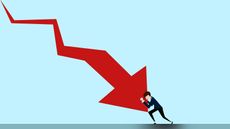 Is A Recession Looming? Two Big Bank CEOs See It That Way
Is A Recession Looming? Two Big Bank CEOs See It That WayRecession is likely, Citi's CEO told a Senate panel today, a sentiment echoed by JP Morgan's chief executive last week.
By Joey Solitro Published
-
 More Signs of Belt-Tightening and a Slowing Economy: The Kiplinger Letter
More Signs of Belt-Tightening and a Slowing Economy: The Kiplinger LetterThe Kiplinger Letter Although fewer banks are tightening lending standards, more businesses and households are feeling the squeeze.
By Rodrigo Sermeño Published
-
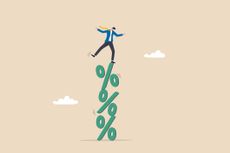 The Era of Super-Low Interest Rates Could Be Over: The Kiplinger Letter
The Era of Super-Low Interest Rates Could Be Over: The Kiplinger LetterThe Kiplinger Letter We’re likely never going back to the historically low rates that prevailed in late 2019 and early 2020.
By David Payne Published
-
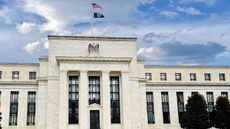 The Fed Holds Interest Rates Steady
The Fed Holds Interest Rates SteadyThe Fed cautions that inflation remains high and it is prepared to adjust its monetary policy ‘as appropriate if risks emerge.’
By Esther D’Amico Published
-
 5 Ways to Shop for a Low Mortgage Rate
5 Ways to Shop for a Low Mortgage RateBecoming a Homeowner Rates are high this year, but you can still find an affordable loan.
By Daniel Bortz Published
-
 Banks Lost Billions on Bad Loans Last Quarter: Kiplinger Economic Forecasts
Banks Lost Billions on Bad Loans Last Quarter: Kiplinger Economic ForecastsEconomic Forecasts Bank deposits are also down, and more people are tapping into their savings.
By Rodrigo Sermeño Published
-
 Kiplinger Special Report: Key Business Costs for 2024
Kiplinger Special Report: Key Business Costs for 2024Economic Forecasts Looking at business costs for 2024, expect slight cost increases across the board, from insurance rates to shipping expenses. Profits will be up, too.
By John Miley Published
-
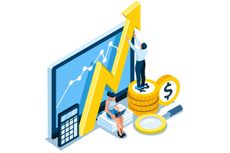 Bond Yields Highest Since 2008
Bond Yields Highest Since 2008The yield on the 10-year Treasury increased 1.6 basis points to reach 4.258% on Wednesday afternoon, up from 4.22% on Tuesday. This is the highest level it had been since June 13, 2008.
By Erin Bendig Published